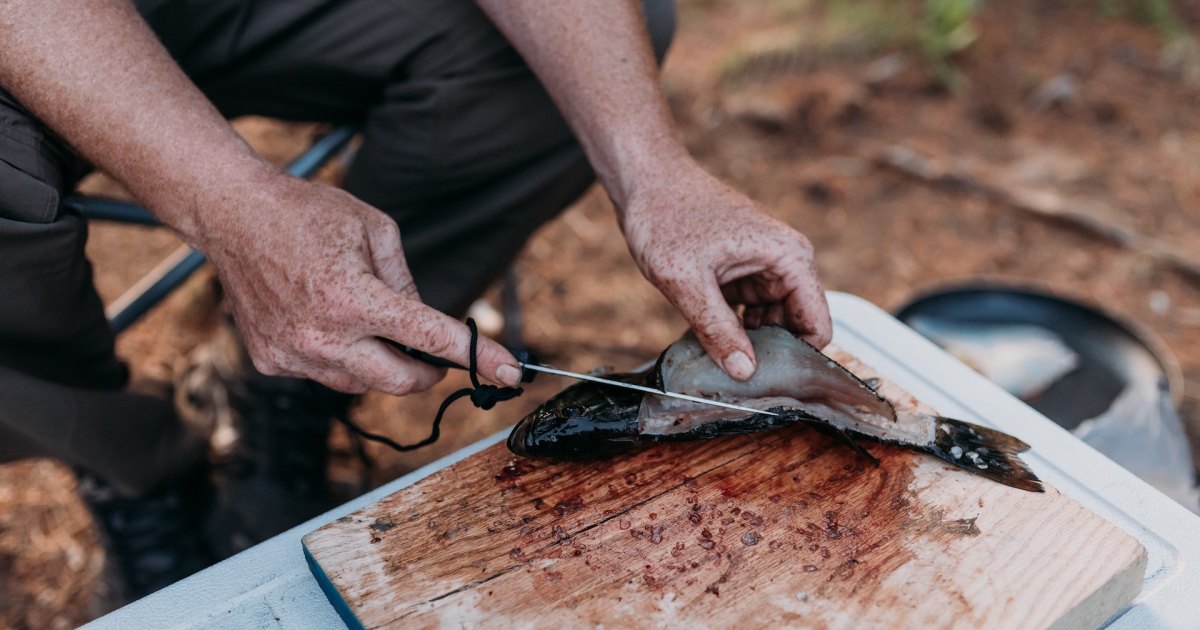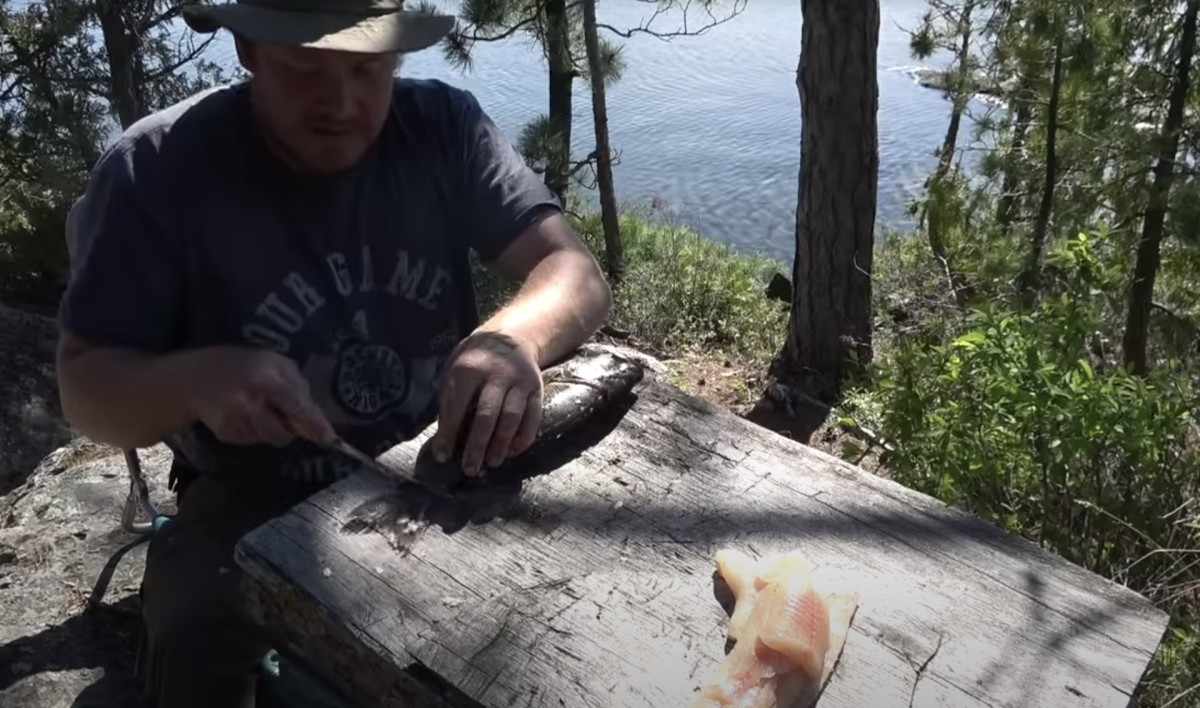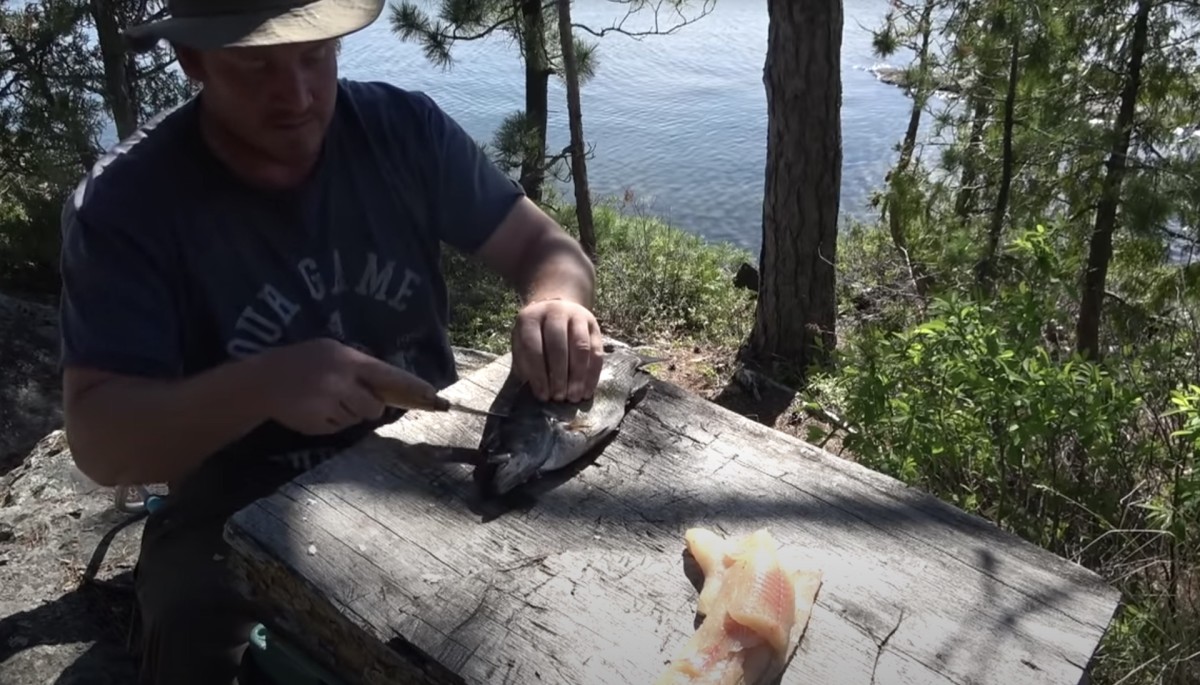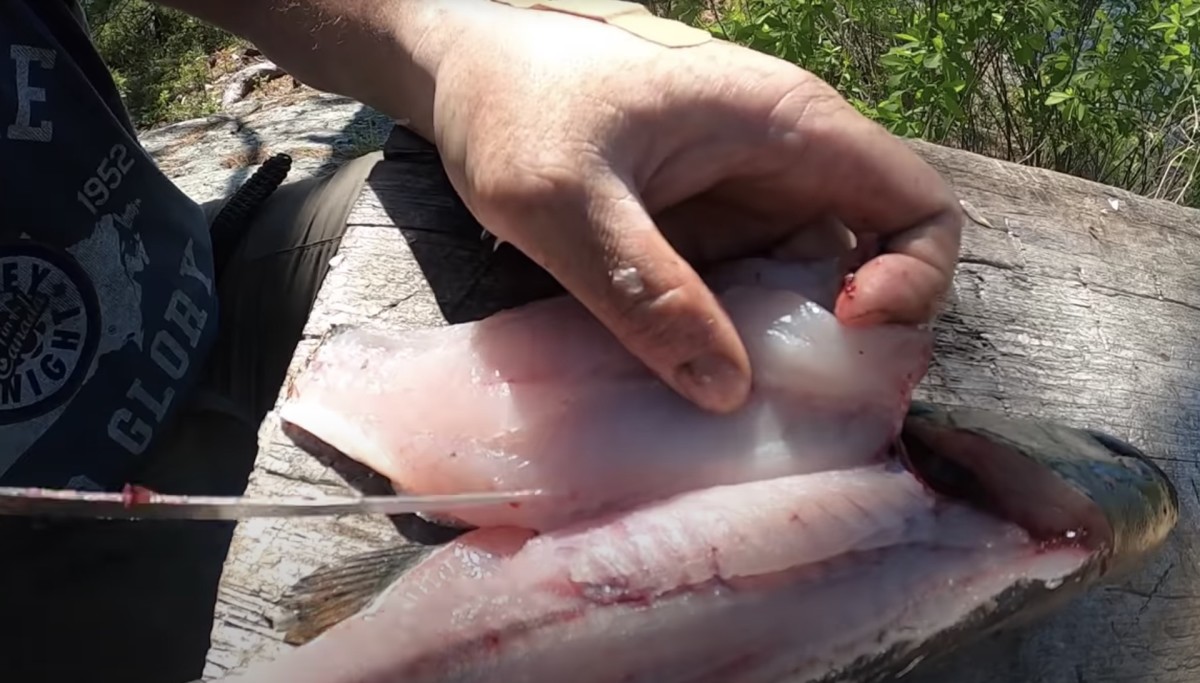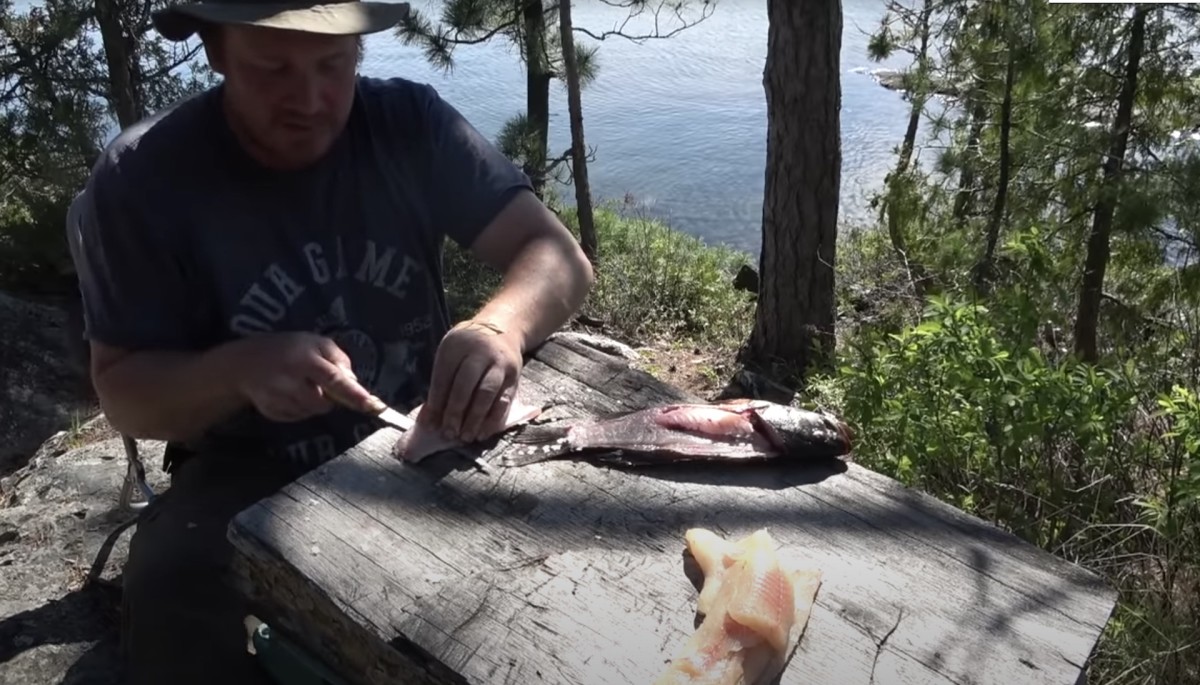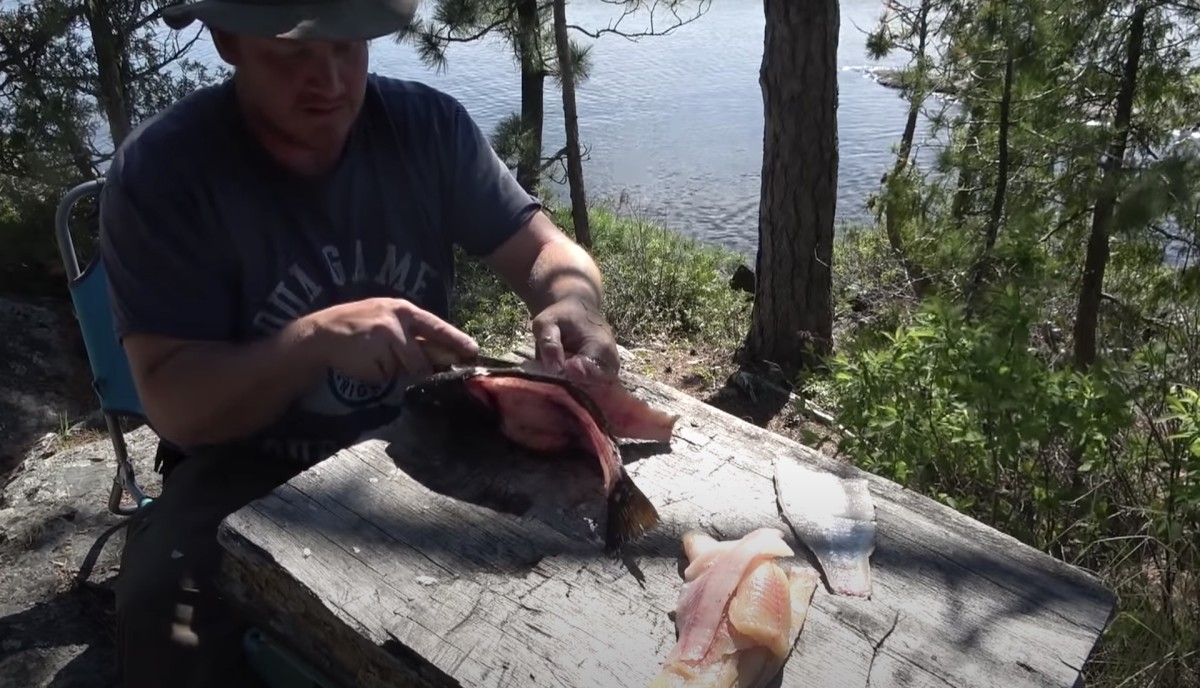No products in the cart.
Fitness Tips
Learn How To Fillet a Fish in the Field
Fresh fish is delish. But even if you’re already a decent fisherman or just plain lucky, catching fish can be the easy part between hitting the water and a fine meal. With larger fish, a good way to extract the meat while leaving the bones behind is filleting. With practice, you can get fast and efficient. Don’t be intimidated by the experts if you’ve never filleted a fish in the field before. With minimal time figuring it on your own, you’ll find it’s not all that hard.
Follow the steps below to learn how to fillet your own fish with perfection!
Note: A fillet knife is great to have. Fillet knives are long, thin, sharp and have a little flexibility to them. Don’t have a fillet knife? Don’t worry, just use whatever knife at your disposal is sharpest.
1. Skip scaling and gutting the fish (you’re going to be removing the skin anyways), and lay the fish flat down on its side on a flat surface.
2. Two steps here. First, make a forward-leaning, diagonal cut just behind the gills going from the top of the spine to the bottom of the stomach. Cut down to the spine and rib cage. Then, at the other end of the fish, make a vertical cut down to the spine just in front of the tail.

3. Trace your fillet: For insurance, consider tracing out your fillet by making a shallow slit along the top of the fish’s spine on the working side of the fish to connect the cut behind the fish’s gills and the cut at its tail. Do the same along the working side of the stomach too. Note: This isn’t mandatory but taking the time to do even one of these cuts helps the final product.
3. Starting at the tail, insert the blade of the knife into your slit and cut toward the head by turning the side of your knife flat against the spine. Begin cutting toward the head using the two slits you made to guide you. Stop once you reach the rib cage. You’ll want to secure the fish by holding it down with your free hand, just make sure that the knife is always under or behind your free hand to avoid cutting yourself.
4. At this point there are two ways to go: Keep following the spine and cut through the rib cage, ending behind the gills at your initial cut; or, added challenge, follow the rib cage by cutting up to the spine with the knife, where you’ll then begin slicing down along the ribs from the spine. Keep the side of your knife against the rib cage and let it guide you as you slice all the meat off of it until you reach your initial cut. Now you can lift your fillet off.
5. If you decided to cut through the rib cage as described in the previous point, flip your fillet skin-side down, and slice the rib cage off of the fillet starting your cut from the top. Use the rib cage to guide your knife as you go. As is the case with much of this process, the goal here is to leave as much meat on the fillet as possible.
6. If you sliced around the rib cage while filleting, skip the last point and start removing the skin. To do this, you’ll want to, A) lay your fillet down, skin side down. B) Jam your thumbnail into the meat at the tail as far back on the fillet as possible in order to pin the skin down to your working surface with your thumbnail. C) Cut down into the meat with your knife, turning it 90 degrees so that the side of your knife is flat against the skin and under the meat. Holding the fillet in place with your thumbnail, cut away from yourself while keeping the knife flat against the skin until the meat has fully separated. Try bending the knife slightly during their process to ensure its side remains pressed firmly against the skin.
When you see that perfect, meaty fillet lift off of the skin, it gives you a satisfying feeling!
7. Flip the fish over and repeat the above steps on the other side. Note: Some fish have fewer bones than others. With species such as northern pike, you’ll want to take an additional step to slice the y-bones out of the fillet before removing the skin, but with many species of fresh or saltwater fish such as bass, the above steps will give you a boneless fillet if done right.
Now you’ve got to decide how you want to cook your fillets. Blackened, baked, seared, beer-battered, or pan-fried to a golden-brown crispness: All can be delicious methods. Feeling hungry? Grab your rod, or just cheat and take a trip to the local grocery store.

In the second half of this video (14:22 in), I demonstrate the steps explained above for filleting a bass (as well as another method for cleaning northern pike). I cook ‘em up over the fire too. (more from Jim Baird)
For access to exclusive gear videos, celebrity interviews, and more, subscribe on YouTube!
Source link

